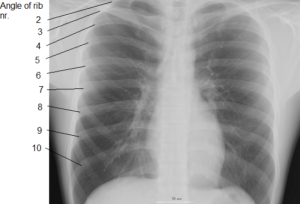We at Howard Fensterman Charities believe that the more you know about your health, the better you are to identify ailments that may affect you during your lifespan or perhaps you just want to learn more about you your body functions. Either way, we welcome you here and hope you gain the knowledge you are seeking.
 Our Ribs
Our Ribs
Before we delve into our rib discussion, let’s lay the groundwork regarding some terms we should be familiar with.
Terms Associated with the Human Rib Cage
Rib Cage: So, we start with the rib cage, also known as the thoracic cage – what is it? Quite simply, it is the ribs that are attached along the vertebral column (spine).
Thoracic Vertebrae: These are the bones along the vertebral column between the cervical bones above and the lumbar vertebrae.
Sternum: Also known as the breastbone, it is a long flat bone situated in the central part of the chest. It connects to the ribs and forms the front of the rib cage and in doing so, it encloses and protects the heart and lungs from injury. It is one of the largest flat bones of the body.
Human Ribs Explained

The human species have 24 ribs, separated in 12 pairs and are attached at the back to the thoracic vertebrae (spine). They are numbered from 1–12 (more on this later). Essentially, they are the bones that curve around the spine and form the majority of the thoracic cage. They are lightweight, but strong and are designed to protect the heart and lungs, also known as the thoracic organs.
There are 12 ribs in all on each side of the vertebral column and are designated into three categories: true (vertebrosternal) ribs, false (vertebrochondral) ribs and floating (vertebral, free) ribs. True ribs are the ones that attach directly to the sternum and are numbered one to seven. False ribs are numbered eight to ten are indirectly connected to the sternum.
What Happens When You Break a Rib?
Broken ribs are one of the most common injuries when it comes to fractured bones. The injuries are usually associated with sports or vehicle accidents. Generally speaking, broken ribs aren’t dangerous, but if they are cracked into numerous pieces, that could pose a problem. Similar to broken glass, there may be sharp or jagged edges stemming from one of the fractures and that can cause damage to internal organs or major blood vessels.
With that said, if you incur a broken rib, see a doctor. In most cases, fractured ribs can heal on their own in a few months, but it goes without saying that anytime you fracture a bone, you should seek medical help to be sure your health is not in jeopardy.
What are the Symptoms of Broken Ribs?
You may feel chest pressure or squeezing pain. If you do feel this, don’t second guess it because it may also be associated with a heart attack.
How Can I Prevent a Broken Rib?
Essentially you can’t if it occurs from an injury, but you can do some preventative maintenance such as:
-
-
Wear the appropriate protective equipment in sports.
-
Keep your floors clear of debris. One fall and you can get a bone broken. This is especially important for the elderly. Place a rubber mat in the shower.
-
Eat the right foods that contain calcium and vitamin D which is essential for maintaining strong bones. 1,200 milligrams of calcium and 600 International Units (IU) of vitamin D daily from food and vitamin supplements are recommended.
-
